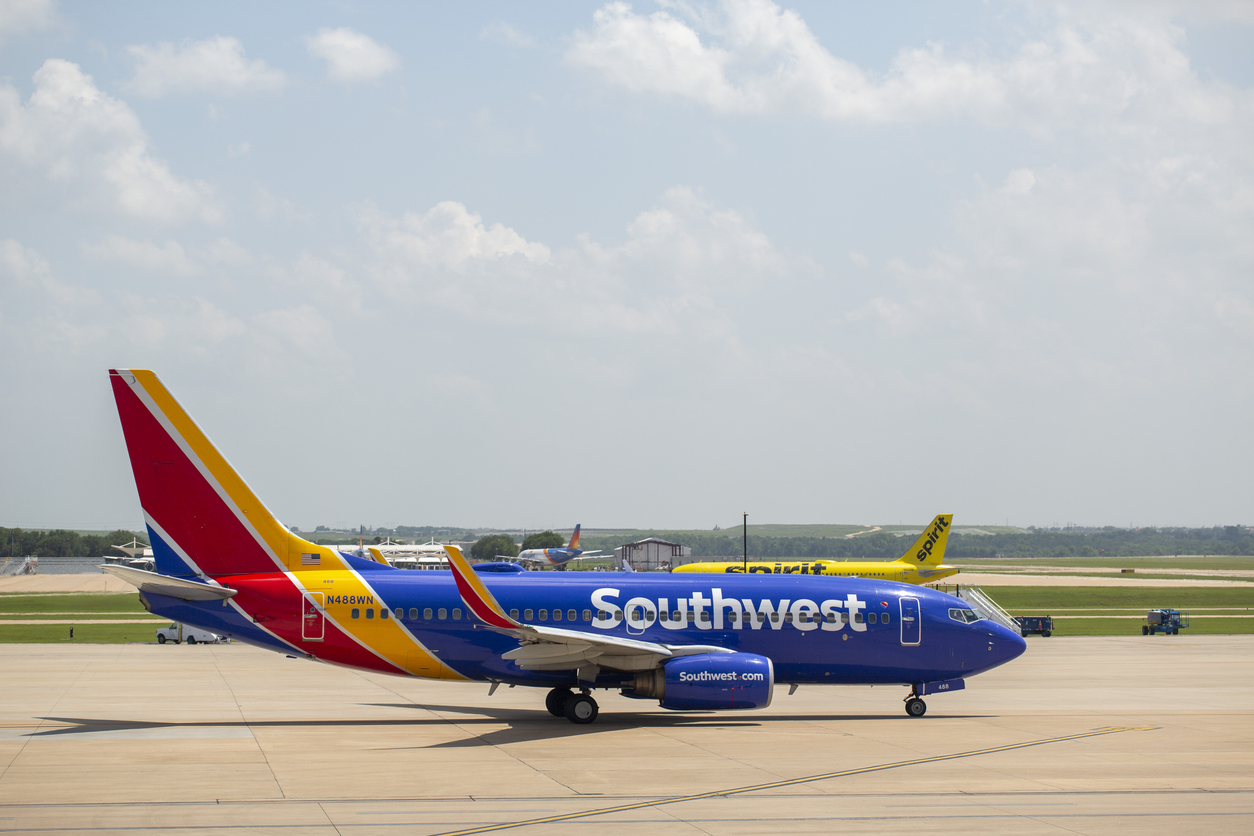
The National Transportation Safety Board has released 2,000-pages of interviews, transcripts, and more details about a harrowing near-miss incident that rattled air travelers in Texas and across the U.S. in 2023.
After a FedEx and a Southwest plane came within seconds of colliding with each other at Austin-Bergstrom International Airport (AUS) back in February, we finally have a few more answers as to what caused the planes’ dangerous near-collision and what is leading to an alarming surge in similar near-misses across the nation.
FedEx and Southwest Planes Missed Colliding by 100 Feet
On the freezing, foggy morning of February 4, 2023, the 183 passengers aboard a Southwest Airlines 737 bound for Cancún came just seconds from losing their lives in a near-miss as an FAA controller working an overtime shift, and in low-visibility conditions, tried to “squeeze” the plane’s take-off in before a FedEx cargo jet was supposed to land on the very same runway.
The air traffic controller on duty told investigators he thought the Southwest plane would take-off quicker than it did as they are known to depart right after being given the go-ahead. He referred to Southwest as the “only carrier that I would do any squeeze play with.” That apparently includes in a fog so dense he couldn’t even see the Southwest plane on the runway.
Fortunately, one of the FedEx pilots was able to make out the silhouette of the Southwest plane’s wing at the last minute and aborted their landing, also calling for Southwest to abort its take-off, saving their three-person crew and the passengers in the other plane.
The planes missed colliding by just 100 to 150 feet.
The controller, who has worked in the industry for 13 years and at AUS for four years, told investigators that he was unsure why he didn’t call off the FedEx cargo jet’s landing clearance, and suggested that if he had called them off too late, the two planes could have collided in the air, “making a worse situation even worse.”
Air Traffic Controller Negligence Likely Played a Major Factor
Though the NTSB isn’t expected to release its full investigation or probable cause until next year, the details already suggest a likely culprit. When an air traffic controller fails to maintain minimum clearance between airplanes at takeoff, during flight, or at landing that is Air Traffic Control negligence, and it’s among the most common causes of aviation accidents.
Earlier this year, a New York Times investigation found that the controller’s catastrophic mistakes in Austin were also compounded by the fact that the airport is not equipped with the latest airport surface detection equipment that tracks planes and vehicles on the ground, which would have easily prevented the situation at hand. Furthermore, the airport is undergoing a crisis-level staffing shortage, which is playing out across the country and posing a public danger.
Air Traffic Controller Shortage Causing an Air Travel Safety Crisis
America is believed to have the safest air travel in the world, but the near-miss at AUS was one among seven close calls that the NTSB investigated this year. And another New York Times investigation found that close calls happened, on average, multiple times a week in 2023. In fact, AUS had a second near-collision in June, according the Austin Monitor.
The thought of even coming remotely close to colliding with another plane is terrifying to anyone who travels, and the surge in near-misses is placing urgency on the Federal Aviation Administration to take immediate action. Aviation experts have called for the FAA to improve staffing, equipment, and technology to cope with close calls and deal with the understaffing and frequent overtime leading to air traffic controller fatigue.
Will FAA Hiring Binge Address Surge in Airline Near-Collisions?
In its FY 2024 budget request, the FAA announced its effort to accelerate air traffic control hiring and training to compensate for the shortage, which was greatly exacerbated by restricted hiring during the pandemic.
But even with a hiring binge, it’s possible the shortage could hobble air travel through the 2030s by some reports.
The FAA plans to hire and train 1,800 controllers, but it also expects to lose 1,400 more through retirements and departures, and these jobs require significant training.
Aviation experts who testified before congress in November cited a growing shortage of retired air traffic controllers who are available or willing to train new recruits. None of that sounds very promising for actually addressing the staffing shortage, getting new hires up to speed, or curbing the unsustainable workloads of these essential workers.
This week, the FAA also announced another new measure to boost safety probes. It will extend the cockpit voice-recording requirement to 25 hours for new airplanes, which the NTSB has been pushing for since 2018 and which has been a requirement in Europe since 2021, according to Reuters.
Currently, these devices are only required to record 2-hour loops in America. The voice recorder captures transmissions and sounds in the cockpit, and having more data will be crucial in understanding why airplane crashes occur and will help operators address safety deficiencies.
Call 1-888-603-3636 or Click Here For a Free Consult with Our Undefeated Texas Plane Crash Lawyers
Our Undefeated Texas Airplane Crash Lawyers continue to look into the growing crisis of airline collision near-misses.
If you have any questions about your rights after a Texas plane accident, you can contact our Plane Crash Lawyers at 1-888-603-3636 or send us a confidential email through our Contact Us form.
All consultations are free and, because we only represent clients for a contingency fee, you’ll owe us nothing unless we win your case.